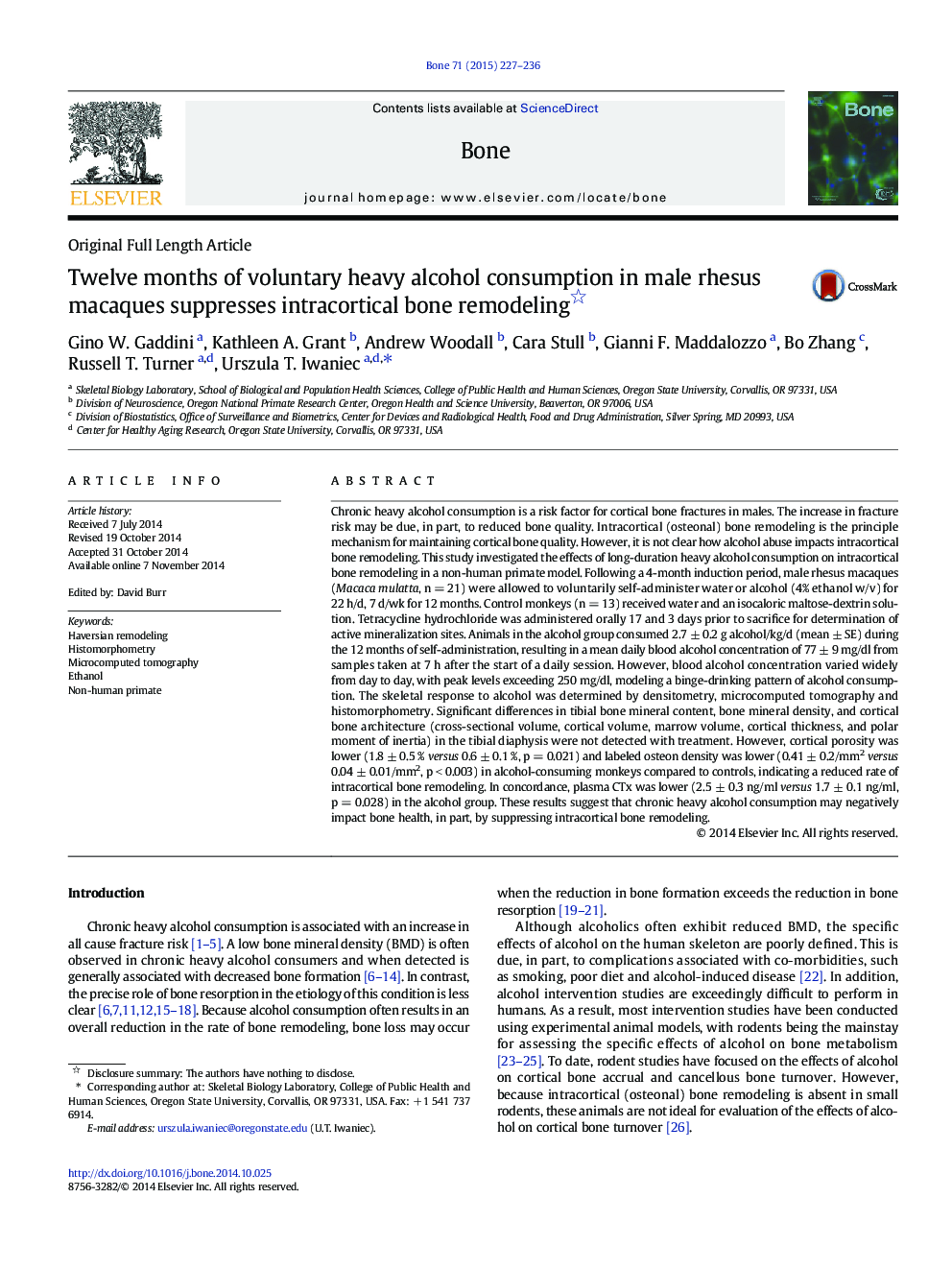| کد مقاله | کد نشریه | سال انتشار | مقاله انگلیسی | نسخه تمام متن |
|---|---|---|---|---|
| 5889833 | 1568148 | 2015 | 10 صفحه PDF | دانلود رایگان |
- Chronic alcohol abuse is associated with an increase in all cause fracture risk
- Effects of 12Â months of voluntary alcohol consumption on intracortical bone remodeling were evaluated in young adult male rhesus macaques.
- Significant differences in tibial BMC, BMD, and cortical bone architecture in the diaphysis were not detected with treatment.
- Labeled osteon density was lower in alcohol-consuming monkeys compared to controls, indicating a lower rate of intracortical bone remodeling.
- The results suggest that chronic heavy alcohol consumption may negatively impact bone health, in part, by suppressing intracortical bone remodeling.
Chronic heavy alcohol consumption is a risk factor for cortical bone fractures in males. The increase in fracture risk may be due, in part, to reduced bone quality. Intracortical (osteonal) bone remodeling is the principle mechanism for maintaining cortical bone quality. However, it is not clear how alcohol abuse impacts intracortical bone remodeling. This study investigated the effects of long-duration heavy alcohol consumption on intracortical bone remodeling in a non-human primate model. Following a 4-month induction period, male rhesus macaques (Macaca mulatta, n = 21) were allowed to voluntarily self-administer water or alcohol (4% ethanol w/v) for 22 h/d, 7 d/wk for 12 months. Control monkeys (n = 13) received water and an isocaloric maltose-dextrin solution. Tetracycline hydrochloride was administered orally 17 and 3 days prior to sacrifice for determination of active mineralization sites. Animals in the alcohol group consumed 2.7 ± 0.2 g alcohol/kg/d (mean ± SE) during the 12 months of self-administration, resulting in a mean daily blood alcohol concentration of 77 ± 9 mg/dl from samples taken at 7 h after the start of a daily session. However, blood alcohol concentration varied widely from day to day, with peak levels exceeding 250 mg/dl, modeling a binge-drinking pattern of alcohol consumption. The skeletal response to alcohol was determined by densitometry, microcomputed tomography and histomorphometry. Significant differences in tibial bone mineral content, bone mineral density, and cortical bone architecture (cross-sectional volume, cortical volume, marrow volume, cortical thickness, and polar moment of inertia) in the tibial diaphysis were not detected with treatment. However, cortical porosity was lower (1.8 ± 0.5 % versus 0.6 ± 0.1 %, p = 0.021) and labeled osteon density was lower (0.41 ± 0.2/mm2versus 0.04 ± 0.01/mm2, p < 0.003) in alcohol-consuming monkeys compared to controls, indicating a reduced rate of intracortical bone remodeling. In concordance, plasma CTx was lower (2.5 ± 0.3 ng/ml versus 1.7 ± 0.1 ng/ml, p = 0.028) in the alcohol group. These results suggest that chronic heavy alcohol consumption may negatively impact bone health, in part, by suppressing intracortical bone remodeling.
Journal: Bone - Volume 71, February 2015, Pages 227-236
